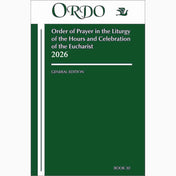From the desk of the Tar Heel disciple:
November 6, 2025
This year, for the second Sunday in a row, the usual cycle of Masses and readings for the Sundays of Ordinary Time will be superseded by a special observance; November 9 is the feast of the Dedication of the Lateran Basilica. The significance of this celebration is, perhaps, little understood by most of the Catholic faithful. And, perhaps, this is due in great part to the lack of understanding of the importance of celebrating the anniversaries of the dedication of our local churches.
The Old Testament provides ample evidence of the importance given by the people of Isarel to the dedication ceremonies, first of the desert tabernacle established by Moses followed by the temple in Jerusalem built by Solomon. When that temple was destroyed by the Babylonians, a new temple was constructed and dedicated by the returning exiles. And when that second temple was desecrated by the Greeks, it was re-dedicated with much ceremony and rejoicing, as recounted in chapter four of the First Book of Maccabees. When churches were finally constructed after many long years of persecution by the Roman Empire, they were solemnly dedicated, and the anniversaries of those celebrations were annually commemorated afterwards.
Today, the Church wishes not only to solemnly dedicate the church buildings where the People of God, the Body of Christ, gather to celebrate the Sacraments of faith, but also to keep an annual liturgical festival (feast) in commemoration of the event. It is the mind of the Church that the anniversary of the dedication of every parish church be duly celebrated. Such a recurring commemoration is given the liturgical rank of a “solemnity” in the church. A cathedral church not only does the same, but all the parishes of a diocese should observe the anniversary day of the cathedral with the rank of “feast” in the individual parishes. Sadly, these liturgical observances are little known and often omitted.
Since the Lateran Basilica is the cathedral church of Rome (not, as is so commonly thought, St. Peter’s), the anniversary of its dedication (originally, in 324 A.D.) is kept as a solemnity within the church itself, and as a feast, not only within the Diocese of Rome, but throughout the Roman Catholic world. The cathedral church of Rome is officially known as the Major Papal, Patriarchal and Roman Archbasilica, Metropolitan and Primatial Cathedral of the Most Holy Savior and Saints John the Baptist and the Evangelist in Lateran, Mother and Head of All Churches in Rome and in the World.
The “Lateran” is a reference to the Lateran palace and family on whose precincts the first church and papal residence was established. The popes lived at the site for about 1,000 years (from the early 300’s to the early 1300’s) before relocating to the Vatican, in 1376. Moreover, five ecumenical councils were held at the basilica. The original church and papal residence were greatly damaged by fires in 1306 and 1361. A complete reconstruction was begun in the second part of the 16th century and the façade, as seen today, was only completed in 1735. The basilica and its property are recognized (since 1929) as “extraterritorial,” that is, entirely subject to the Holy See, and so Pope Pius XII was able to hide Jews and other refugees from the Nazis there during World War II.
This feast is rightfully celebrated as a feast of the whole Church, the Body of Christ, in loving union with he Holy Father. It ultimately is meant to remind us of who were are called to be: living stones, with Christ Jesus himself as the cornerstone (see 1Peter 2:4-5). The same is true when we observe the anniversary feasts of the dedication of our parish churches and local cathedrals!



